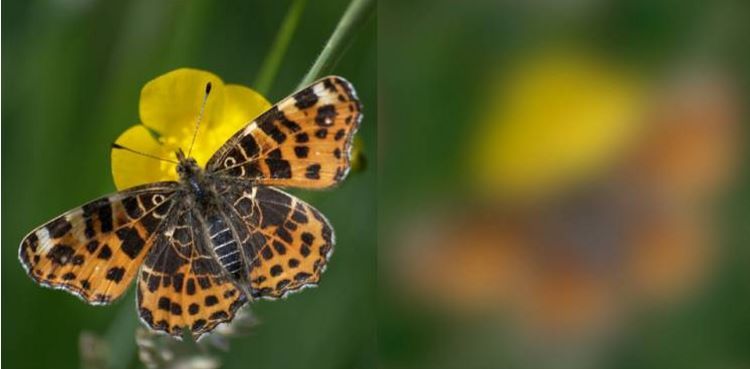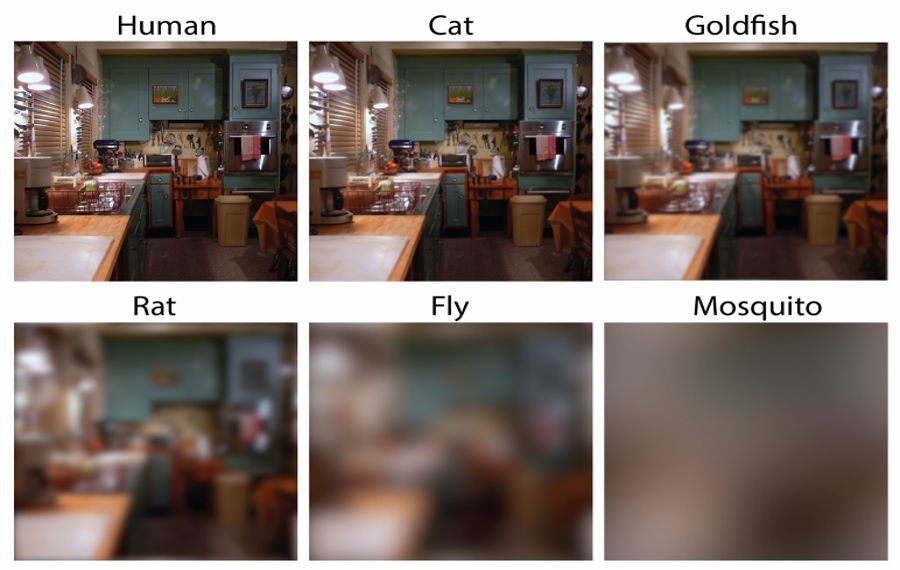How animals see the world?
The human eye is not very well adapted to distinguish colors or operate in low light. But when it comes to visual acuity, we are at the forefront of the animal kingdom and can see much better m.in. from cats and dogs, according to a study by Duke University researchers.
In an article published in the journal "Trends in Ecology & Evolution" scientists cfownali visual acuity in nearly 600 species ofoin animals including the insectow, birdow, mammaloin and fish. – Most see much less detailedołow, than humans – mowi study author Eleanor Caves.
To measure visual acuity, a category is used – cycles per degree (CPD). In a nutshell, we can say that it is about the number of white and black lines, whichore eye is capable of rozrochew before they turn into a gray spot. Data on the animal’s visual acuity was collected through studies of the anatomy of its eyes, specificallyolarity of the abundance, depth and density of light-sensitive structures.
The human eye sees at a resolution of 60 CPD, which allows us to recognize other people’s faces from a distance. Chimpanzees and other primates see with similar acuity. Several species ofoin birdow has much better eyesight than us. An Australian eagle can see at a resolution of 140 CPD, which allows it to see a small croly of hundreds of metersoin above the ground. In addition to eagles, vultures and falcons, most birdsow can see at a resolution of 30 CPD.
The same is true of the sight of the fish. – The best-sighted fish have eyesight twice as bad as humans – a mowi Caves. The acuity of the human eye is also 4-7 times higher than the acuity of ps visionow or catow and more than 100 times higher than a mouse or insectow. Human beings whoory can see less than 10 CPD, it is considered blind. It turns out that most insectow does not even see a single line.
Scientists have developed a program thatory blurs the images uploaded to it and shows the image seen by the animals, which can be used for further scientific research. For example, butterflies are a spot of color for each other. This sheds new light on the purpose of the coloration of the wings of these insectsow. One theory is that the color deters potential predators. The other is that the wings are a decoy to attract a partnerow. Studies of the visual acuity of butterflies and birdsow confirm both hypotheses.

Photo. Eleanor Caves/Duke University
Another example is a species of spider, whichory decorates its nets with white zigzags, spirals and other shapes. One theory, unconfirmed so far, claimed "decoration" This one is designed to warn animals of a possible collision with the web. And in fact, the birds from a few metersow will be able to perceive the net so marked. In contrast, for the insectow will never be visible.
Scientists point out that the images they have created are not a faithful representation of what animals see. After all, the information gathered by the eye must be processed by the mozg animal. It is possible that someore things are therefore seen differently by individualolne species. However, the new software gives scientists an indicationowka what information from the eye goes to the moof the animal’s thigh.

